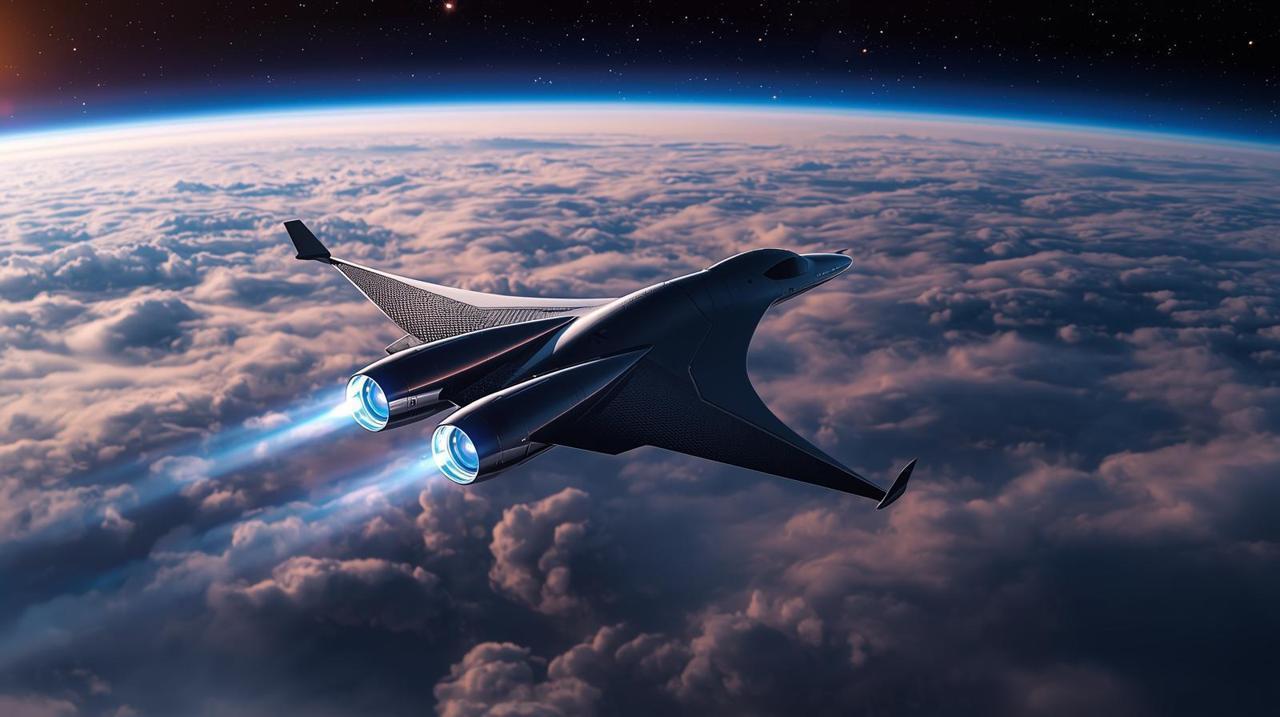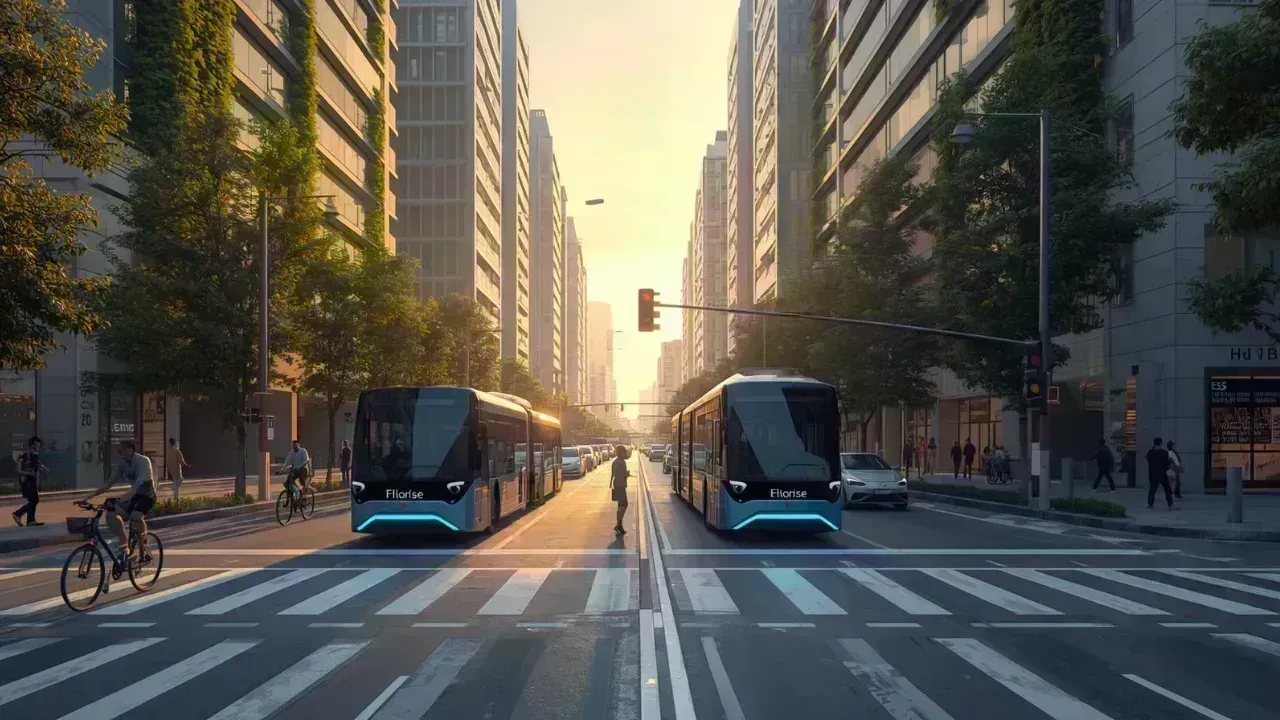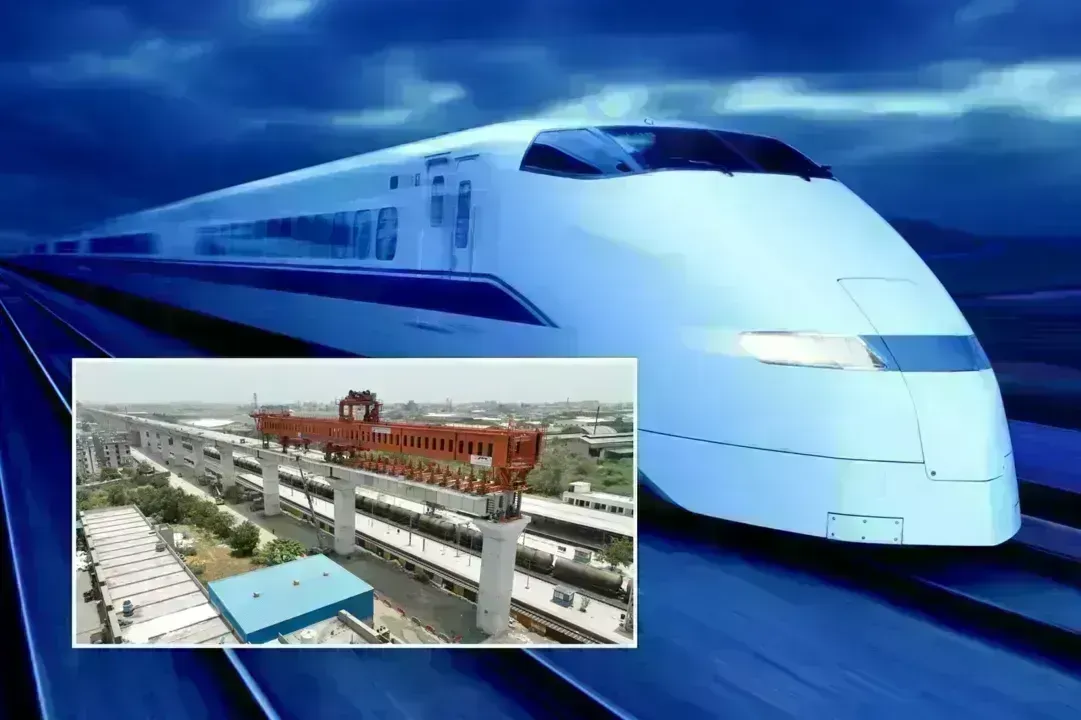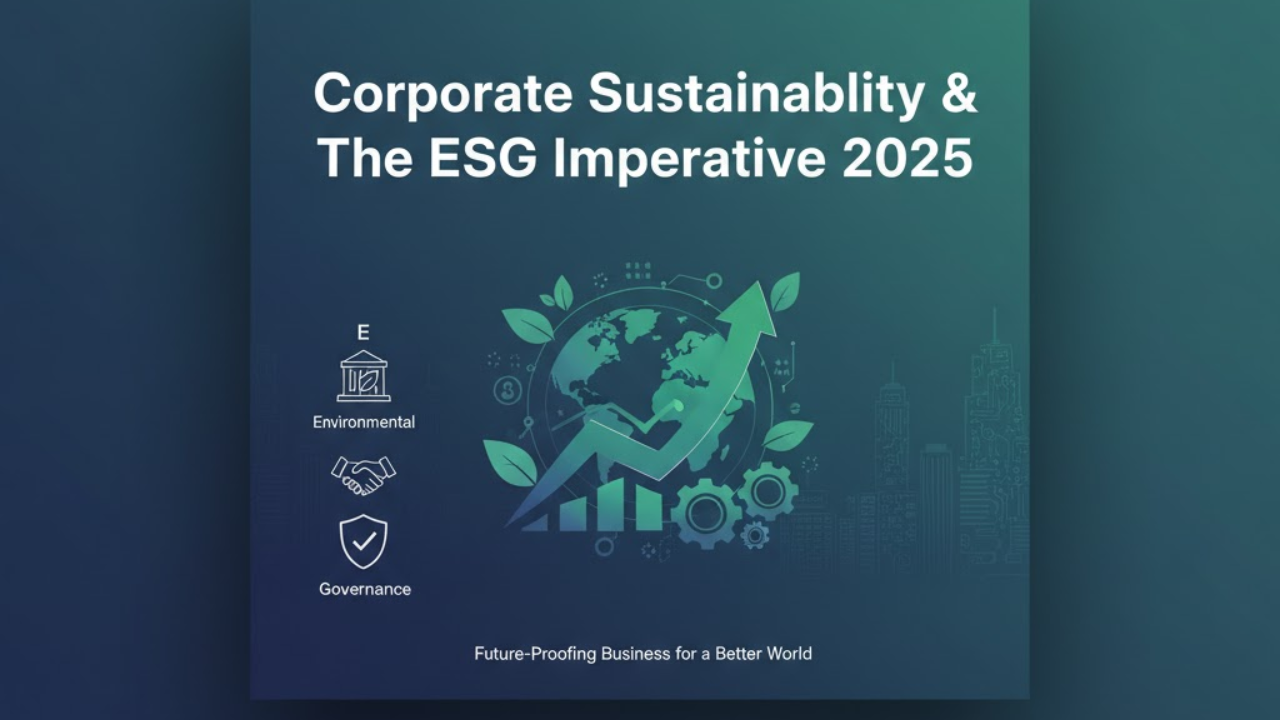
Post by : Shivani
Imagine boarding a flight in New York and landing in London in under two hours. This is the promise of hypersonic commercial flight, a revolutionary leap in aviation technology that could redefine future travel by 2030. Hypersonic flight, defined as travel at speeds exceeding Mach 5 (five times the speed of sound, or approximately 3,800 mph), is no longer a sci-fi fantasy but a tangible goal for aerospace innovators. Companies like Boeing, Lockheed Martin, and startups such as Hermeus and Boom Supersonic are racing to make hypersonic travel a reality, driven by advancements in materials science, propulsion systems, and sustainable fuel technologies.
Recent developments have brought hypersonic flight closer to commercialization. In 2024, Hermeus successfully tested its Quarterhorse prototype, reaching Mach 4.8, while Boom Supersonic’s XB-1 demonstrator completed subsonic and low-supersonic flight tests. These milestones signal a new era in aerospace engineering, with 2030 emerging as a pivotal year for potential commercial deployment. According to a 2025 report by MarketsandMarkets, the global hypersonic technology market is projected to grow from $5.8 billion in 2024 to $13.2 billion by 2030, at a compound annual growth rate (CAGR) of 14.7%.
“Hypersonic flight could shrink the world in ways we haven’t seen since the jet age,” says Dr. Laura Forczyk, an aerospace analyst at Astralytical. “But the road to 2030 is fraught with technical, regulatory, and environmental hurdles.” This article explores the promises and challenges of hypersonic commercial flight, delving into its technological foundations, expert insights, public reactions, and the transformative impact it could have on global travel.
The journey to hypersonic flight builds on a century of aviation milestones. The Wright brothers’ first powered flight in 1903 marked the dawn of modern aviation, followed by the jet engine’s introduction in the 1940s, which enabled commercial airliners to cruise at 550–600 mph. The Concorde, operational from 1976 to 2003, pushed boundaries with supersonic speeds of Mach 2, cutting transatlantic flight times to about 3.5 hours. However, its high costs, noise pollution, and environmental impact led to its retirement.
Hypersonic flight represents the next frontier. The X-15, a NASA experimental aircraft from the 1960s, reached Mach 6.7, proving hypersonic speeds were possible, albeit for short durations and at extreme altitudes. Recent advancements in scramjet (supersonic combustion ramjet) engines, lightweight composite materials, and thermal protection systems have reignited interest in hypersonic travel. In 2023, NASA’s X-59 QueSST, designed to reduce sonic booms, completed ground testing, paving the way for quieter supersonic and potentially hypersonic aircraft.
Key milestones include:
Hypersonic commercial flight hinges on overcoming significant technical barriers. Current hypersonic technologies rely on scramjet engines, which operate efficiently at speeds above Mach 3 by compressing incoming air without moving parts. These engines require advanced materials to withstand temperatures exceeding 3,000°F. Companies like Reaction Engines in the UK are developing hybrid engines, such as the SABRE (Synergetic Air-Breathing Rocket Engine), which could power aircraft from takeoff to Mach 5+.
Key facts about hypersonic capabilities:
Current progress is promising but limited. Hermeus aims to fly a Mach 5 commercial prototype by 2029, while Boom Supersonic plans to launch its Overture jet (Mach 1.7) by 2030, with hypersonic ambitions to follow. Lockheed Martin’s SR-72, a hypersonic demonstrator, is slated for testing in 2027. However, scaling these technologies for commercial use requires significant investment—estimated at $20 billion per program by aerospace analysts.
Future forecasts are optimistic but cautious. A 2024 McKinsey report predicts that hypersonic commercial flights could capture 5% of the global aviation market by 2035, generating $150 billion annually. However, challenges like sonic boom mitigation, fuel efficiency, and regulatory approval remain critical hurdles.
Expert Opinions
Industry leaders are both excited and pragmatic about hypersonic flight. “The technology is within reach, but commercialization by 2030 will depend on solving cost and sustainability issues,” says Dr. John Langford, CEO of Electra.aero and a former Aurora Flight Sciences executive. He emphasizes the need for lightweight, heat-resistant materials and scalable propulsion systems.
Dr. Amy McCart, a propulsion expert at Georgia Tech, highlights the environmental challenge: “Scramjets are fuel-intensive, and without sustainable aviation fuels (SAFs), hypersonic flight could face backlash.” A 2024 study by the International Council on Clean Transportation (ICCT) estimates that hypersonic aircraft could emit 5–7 times more CO2 per passenger-mile than subsonic jets unless SAFs are widely adopted.
Policymakers are also weighing in. FAA Administrator Mike Whitaker noted in a 2025 interview, “Hypersonic flight will require new certification standards, especially for sonic boom management and high-altitude operations.” The ESA’s Hypersonic Transport Roadmap, published in 2025, calls for international collaboration to harmonize regulations by 2030.
Elon Musk, CEO of SpaceX, has speculated on X that hypersonic flight could complement space-based travel: “Point-to-point rockets might outpace hypersonic planes for ultra-long routes, but aircraft will dominate shorter intercontinental trips.” This view underscores the competitive landscape hypersonic aviation faces.
Public enthusiasm for hypersonic flight is tempered by concerns. A 2025 Pew Research survey found that 62% of Americans are excited about faster travel but 78% worry about ticket costs and environmental impact. Media coverage has been mixed: CNN praised Hermeus’s 2024 test as “a game-changer,” while The Guardian raised questions about the carbon footprint of high-speed travel.
On X, reactions vary widely. User @AeroFan2025 posted, “Hypersonic flights sound incredible, but will they be affordable for anyone but the ultra-rich?” Another user, @GreenSkyAdvocate, wrote, “Unless hypersonic planes run on SAFs, they’re a step backward for climate goals.” These sentiments reflect a divide between excitement for innovation and skepticism about practicality.
Markets are more optimistic. Stocks of aerospace firms like Boeing and Lockheed Martin saw a 7% uptick in 2024 following hypersonic test announcements. Venture capital has poured into startups, with Hermeus raising $400 million in 2025. However, consumer adoption may lag if costs remain prohibitive.
Hypersonic commercial flight could transform society in profound ways:
However, challenges loom large. Regulatory frameworks are underdeveloped, with the FAA and EASA still drafting hypersonic certification standards. Sonic booms, which can disrupt communities below flight paths, remain a significant barrier. NASA’s X-59 aims to reduce boom intensity, but scaling this technology for larger aircraft is uncertain.
Environmental concerns are paramount. Hypersonic flights consume more fuel than subsonic jets, and high-altitude emissions could exacerbate ozone depletion. A 2024 Nature study suggests that hypersonic aircraft could contribute 0.5–1% of global aviation emissions by 2035 if not mitigated. Sustainable aviation fuels, while promising, are currently produced at only 1% of global aviation fuel demand, per the IATA.
Policy changes will be critical. Governments may need to subsidize SAF development or impose carbon taxes to balance environmental impacts. International agreements on high-altitude airspace management will also be necessary to prevent conflicts over hypersonic routes.
Hypersonic commercial flight holds immense potential to revolutionize future travel by 2030, offering unprecedented speed and connectivity. However, its success hinges on overcoming technical, economic, and environmental challenges. By 2030, limited commercial routes may emerge, primarily for premium travelers, with broader adoption likely in the 2035–2040 timeframe. Continued innovation, regulatory clarity, and sustainable practices will determine whether hypersonic flight becomes a cornerstone of global aviation or remains a niche luxury. Stay tuned as companies like Hermeus, Boom Supersonic, and global agencies push the boundaries of what’s possible in the skies.
hypersonic flight, aviation technology, future travel, hypersonic aircraft, sustainable aviation, aerospace engineering, scramjet engines, sonic boom, travel innovation, environmental impact









Bengaluru-Mumbai Superfast Train Approved After 30-Year Wait
Railways approves new superfast train connecting Bengaluru and Mumbai, ending a 30-year demand, easi

Canada Post Workers Strike Halts Nationwide Mail and Parcel Services
Canada Post halts operations as CUPW strike disrupts mail and parcel delivery nationwide amid disput

PM Modi Launches BSNL ‘Swadeshi’ 4G Network, 97,500 Towers Built
India enters global telecom league as PM Modi inaugurates BSNL’s indigenous 4G, connecting 26,700 vi

India’s Iconic MiG‑21 Takes Final Flight After Six Decades of Service
After 60 years India retires its MiG‑21 fighter jet, a legendary yet controversial warplane marking

Hindustan Zinc unveils AI hotspot monitoring at Debari smelter
Hindustan Zinc launches AI-powered Switchyard Hotspot Monitoring at Debari smelter to cut outages bo

Chinese experts worked inside sanctioned Russian drone plant
Chinese drone specialists visited IEMZ Kupol supplying parts and drones via intermediaries, deepenin